9 Real Estate Landing Page Examples from 2024
It doesn’t do you a lot of good to get someone on your website, only for them to leave without giving you any contact information.
Instead, effective advertising campaigns optimize their conversion by directing traffic to landing pages.
Especially if you are doing paid advertising on Google or Facebook, you need high-functioning landing pages. It’s critical to make the most of every web page visitor you’re paying for or your ROI will tank.
Highly optimized landing pages are also called “squeeze” pages, squeezing the visitor toward a specific action: usually signing up.
They are different from “normal” web pages like blog posts, neighborhood pages, and other website content in that squeeze pages aren’t designed for the visitor to wander around and explore your site. They are designed for one thing only – to persuade the visitor to submit their name, email, and phone to you.
As such, landing pages often have no few if any links to other pages on the site. Sometimes they do not even have a menu.
Instead, they have a prominent call-to-action (CTA) or a form that is the only way to move forward. This encourages the user to submit their information in order to move forward.
If you are spending money on advertisements to get people on your site, you can’t afford for them to browse around too long, getting distracted from the action you want them to take.
That doesn’t mean blogs, content, and other items aren’t important. The landing page is just the format that strongly encourages them to move forward with their decision and has been shown to dramatically increase conversions.
Examples of Real Estate Landing Pages
What is My House Worth?
The most quintessential real estate landing page is the home value squeeze page.
This example from Offrs is from their Facebook ad that captures potential seller information. They then sell the lead to their subscribers.
Cash Offer
Offerpad, the iBuyer, is advertising on Facebook, and sends their traffic directly to their homepage.
Their homepage, however, is built with many of the principles of a landing page in mind, trying to direct the visitor to a single action: submitting their address for a cash offer.
Home Sellers
Berkshire Hathaway has a page they are directing their Facebook ad traffic to that is optimized with messaging for sellers.
It is not a squeeze page in that it has lots of other internal links. They might be able to improve on that, but must be happy with the conversion if they are putting money behind it.
Seminar
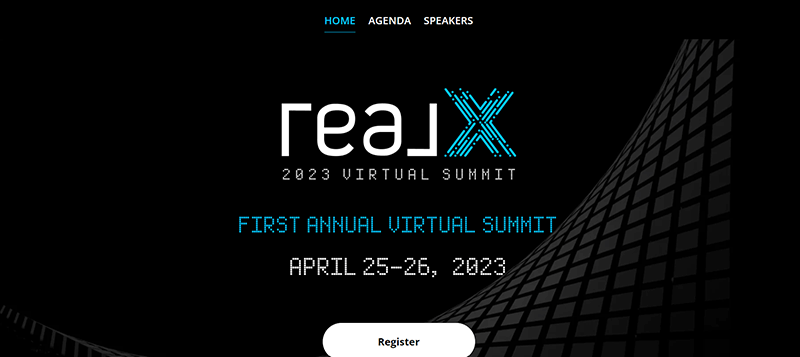
Real is advertising a virtual event and is sending traffic to this minimalist landing page optimized for getting folks to register.
Consider something similar when advertising your first time homebuyer or investor seminars!
Lead Magnet
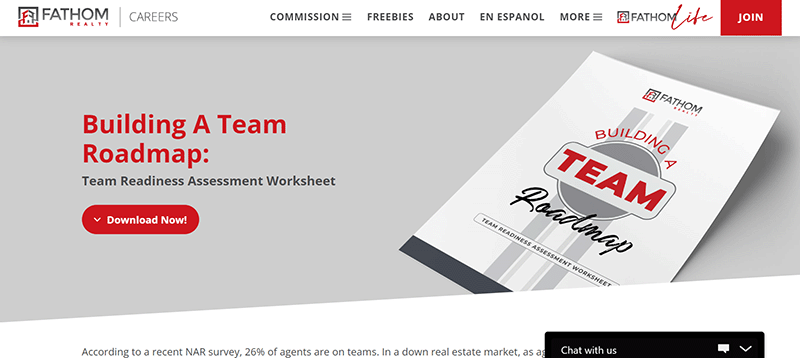
Advertising a lead magnet is an especially effective way of enticing visitors to submit their information. Getting something immediate and for free is sometimes worth that email or phone number.
In this example, Fathom Realty is trying to attract agent information for their recruiting efforts with resources for agents and teams, also while establishing themselves as a subject matter expert.
Just Sold
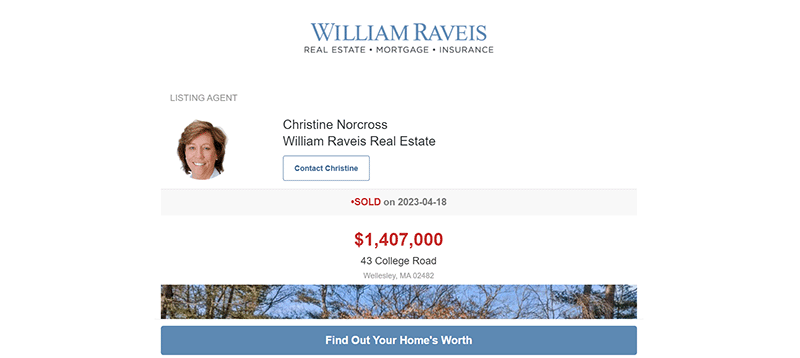
This is a simple Homespotter landing page featuring a just sold listing that the agent is able to advertise on places like Facebook. There is only one button on this landing page: submitting information for a home valuation.
This is another way to give value (everyone wants to know what local homes are selling for, especially in non-disclosure states like Texas!) while getting contact information.
Buyers
This is not really a landing page but just a blog post. The Gray Group is advertising its expertise in helping home buyers first to earn their trust and their contact information. That is a perfectly acceptable way of spending ad dollars.
Listings
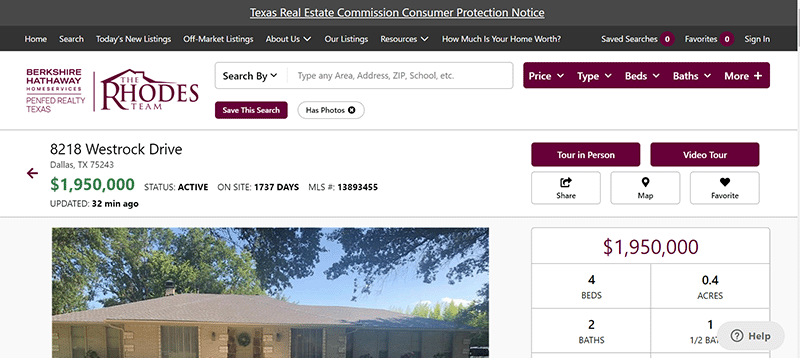
The other option for attracting buyers is to advertise listings directly, as does the Rhodes Team on Facebook. Sending folks directly to your website IDX page, possibly with forced registration, is an effective way of capturing leads.
Form
Houwzer is advertising on Facebook with a very interesting landing page built on Typeform. It allows visitors to pick their journey and there are zero distractions from clicking through.
Recruiting
JPAR sends Realtor visitors to their page on joining the company.
While not strictly a squeeze page, they are at least connecting visitors with the content and copy designed to drive the desired action: learning more about JPAR’s brokerage services.
How to Build a Real Estate Landing Page
There are many ways to build a landing page, including using some of the real estate tools you might already be using.
Website Provider
If you or your broker have a website platform, chances are they have a method for generating landing pages. For example, here are
On a WordPress website, it is easy to install Elementor and use its free plugin to create a simple DIY landing page.
CRMs
Some CRMs have a strong native landing page game.
Of those I’ve reviewed, I was most impressed with Wise Agent’s landing pages. If Facebook advertising and PPC is going to be a major part of your business model, Wise Agent has you covered.
Some other CRMs have built-in landing page resources as well like Top Producer.
I Don’t Have a CRM or Website with Landing Pages!
Not only is that okay, but you don’t even have to have a website to make a landing page!
And even if you do have a website, your site might not have all the customization, testing tools, and other features of professional landing page software that may be worth your time. Read more below about some different landing page service providers that might work for you!
Tips for Designing a Page that Converts
Check out the Pros
Neil Patel is a digital entrepreneur who is famous for having a website that is almost entirely built with the landing page style.
Even the home page leaves you extremely few options other than submitting your information and taking the next step, and only has a tiny menu at the bottom.
He also has an immense number of blog posts and content that drive people to his main pages. But browse his sites, including those at Crazy Egg and Kissmetrics for examples of a website that is fully committed to the landing page concept.
Stalk the Competition
Don’t reinvent the wheel. Copy what is already working.
How? Simple.
Search a term like “what is my home worth [hometown]” and then check out the paid ads that come up.
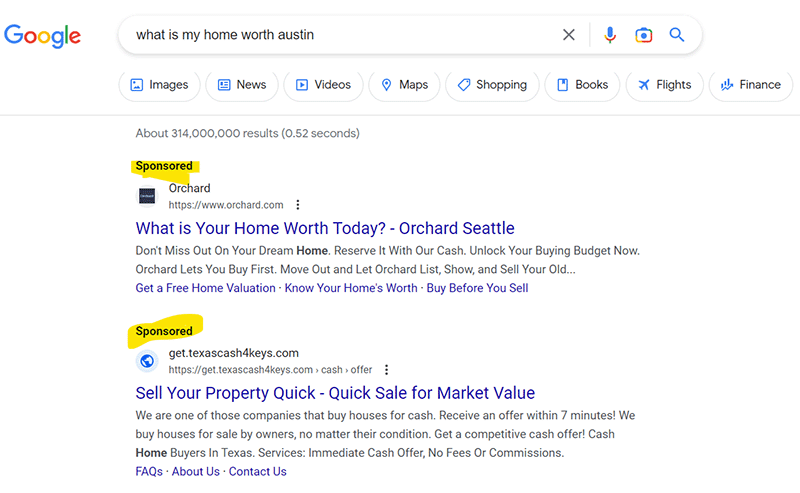
These are folks actively spending money on these ads. Probably these ads are working. This is a great place to start when beginning to brainstorm your landing pages.
Alternatively, you can snoop on Facebook ad landing pages by checking out your competition in the Facebook Ad Library.
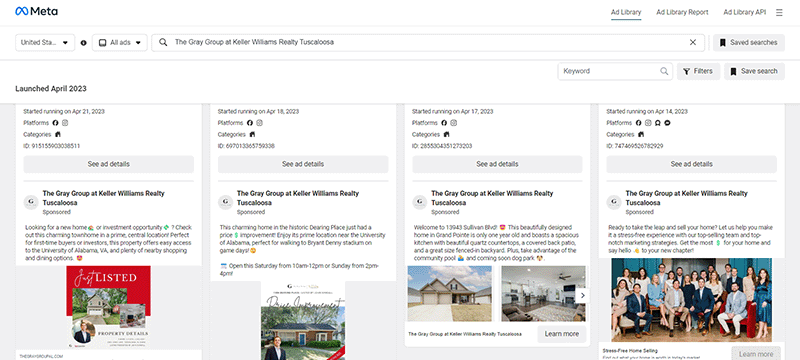
Call To Action
You need a call to action button. The button is usually after a lead capture form.
Be more creative than “Sign up” or “Submit”. You want to communicate what value your customer is immediately receiving when they click.
On my own website, I include call-to-actions frequently, and I hope they work! Here is an example from my Realvolve CRM page:

My call to action takes you off my own website and to Realvolve’s page – the next step I am encouraging the visitor to take.
You want your call to actions to be prominent and a different color than the rest of your website’s theme. For example, I use yellow (#FCC000) for my links and buttons, and nothing else. The color is a shorthand for what is the next action I am encouraging the visitor to take, without their having to think about it.
Social Proof and Testimonials
Social proof has been shown to be a major factor in encouraging people to sign up and be comfortable sharing their information.
Great landing pages often include testimonials, ideally with pictures or even videos of previous clients.
Below is an example from Opendoor’s landing pages. It includes quite a bit of detail, including even the property address. That level of information adds to the credibility of the review, instead of your visitor thinking it’s a fake quote.
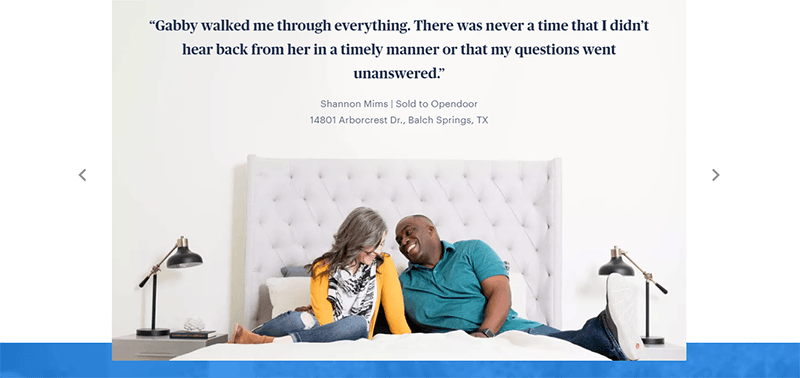
Demonstrate Benefits: Your Unique Value Proposition
“Request a CMA” is an awful call to action.
First, most lay people don’t know what a CMA is, even after you spell it out as “comparative market analysis”.
Secondly, they don’t want a CMA. They don’t want a home valuation.
What do they really want? To sell their home! That is why they are on your page. Don’t confuse things and get directly to your visitor’s pain point.
What problem has brought them to your page? Promise them an answer to that problem.
Meanwhile, this is a good place to talk about your unique value propositions, also referred to a USP, unique selling point.
Are you a discount brokerage with low fees? Does your brand identity revolve around giving back to the community? Feature what makes you “you” prominently on your landing page.
Above the “Fold”
Another characteristic of quality landing pages is having the critical information “above the fold”. That means, on the first screen you see when it pops up, without having to scroll down.
You will likely (though not necessarily) have more down below the fold that the visitor can scroll to. But the most important features – your call-to-action and the form itself – should be above the fold.

Test your Landing Page
Several of the landing page software like Unbounce and Leadpages have A/B testing that allows you to test different versions of your landing page and CTA buttons simultaneously. This allows you to make small tweaks that better match your market and client demographic and maximize your conversion rate. There is an entire industry surrounding conversion rate optimization (CRO).
The most important part of testing a landing page or campaign, however, is tracking your lead sources. Make sure that leads entered into your database have the source annotated. Doing so will allow you to track how many leads, clients, closings, and commissions you’ve gotten from your landing page.
How to Promote a Landing Page
The following are a couple of primary methods real estate agents can get eyeballs on their new landing page, including social media, PPC, and organic SEO.
Facebook Ads
You can create your own Facebook ads that direct users to your website or landing page. Facebook allows for some decent audience targeting, which is great for getting your ad in front of the people most likely to need your real estate services.
Google Ads
Google Ads, a PPC (Pay-Per-Click) ad strategy, is a good, old-fashioned source for paid traffic if optimized correctly. Targeting your “what’s your home worth” ads for keywords like “sell my Columbus home” can be an expensive but effective way to get people in your funnel. Some real estate platforms will manage a PPC campaign for you.
Pinterest and Instagram
Drive traffic with a graphic or picture that can be shared to media-centric sites like Pinterest and Instagram. Or you can “vlog” on Youtube and direct people to a call to action that sends them to your landing page to collect their info.
Website Call-to-Actions
On your front page, on the sidebar, or with a popup (using a service like OptinMonster or a WordPress Popup plugin), you can share prominent buttons and call-to-actions directing users to your landing page.
Internal Links
If you are a content marketer and have a blog, it is worth your time to go to your highest performing and relevant articles and include internal links to your landing page.
Budgeting Your Paid Lead Spending
Real estate is a difficult business to calculate ROI sometimes because it can be 6-12 months before a new campaign begins to bear fruit.
If you are spending money on your landing page, work backwards. What is your income goal? How many closings do you need to reach that in your market? How many leads do you need to get that many closings?
From there, you can come up with what every lead is worth to you.
For example, if you want $50,000, and your average commission is $5000/closing, then you need 10 closings from your campaign. But only 1 of every 50 leads turns into a closing, maybe. So you need 500 leads (10 * 50).
How much is reasonable to spend to get back $50,000? Most real estate companies are looking for at least a 5:1 ratio or better on their ad dollars. That means it is okay to spend $10,000 to get $50,000 in income. So finally – $10,000 / 500 leads is $20/lead.
If you are spending money, is it working out to $20/lead? If under, great! If over, it might be time to tweak your campaign, optimize your landing page further, or rethink where you are spending your money. You want to figure that out before you’ve spent 12 months and $10,000 on something that isn’t working.
Landing Page Software
You don’t even need a website to create and advertise landing pages! Though you might need a URL that you own and can use.
Most of these also have integrations to easily connect to your existing URL and website, like your WordPress site.
Many of these also come with real estate landing page templates ready for you, out-of-the-box.

Cloud Attract
$99/mo. Cloud Attract is a real estate landing page provider that is part of the Cloud Agent Suite, featuring other best-in-class products like Cloud CMA and Cloud MLX. It comes prepackaged and ready to use with numerous real estate templates for home search, home valuations, and more.

Instapage
$149+/mo. Instapage is a landing page platform that includes managed digital ad spending and more. doesn’t have a category of templates specifically designated for agents. But they also have some of the better articles for agents building a real estate landing page. Their plans are catered to business users.

Leadpages
$25+/mo. Leadpages is another popular landing page provider, and their real estate templates are a little more on point than Unbounce’s as far as having something ready to go in the residential real estate space (e.g. “what’s my home worth”, and “search homes”, etc).
Not only does Leadpages come with A/B split testing, but also a heat map to help visualize what parts of your landing page get the most attention. It starts at $25/mo, though the split testing is available only at the $48/mo plan.

Unbounce
$79+/mo. Unbounce has numerous templates, including real estate templates. Most of those templates are geared more toward builders, property managers, building managers, and not so much the traditional residential real estate landing page themes. But they are just templates. Unbounce can be customized to your heart’s desire, featuring a mobile-friendly drag-and-drop page builder.
Unbounce also has some great A/B testing features, allowing you to run multiple versions of a landing page simultaneously, and test which one converts better. Unbounce is a mid-priced option at $79/mo.
Conclusion
Not every agent needs to create landing pages for real estate.
But if you are spending money on advertising, or promoting content on your website, you likely want to incorporate landing pages to ensure that you are getting the most from your efforts.
And, if all this seems like more trouble than it’s worth, most of the companies offering paid leads are doing these steps already for you. Consider purchasing leads directly from them!
Updated April 4, 2024; Originally published June 14, 2018.

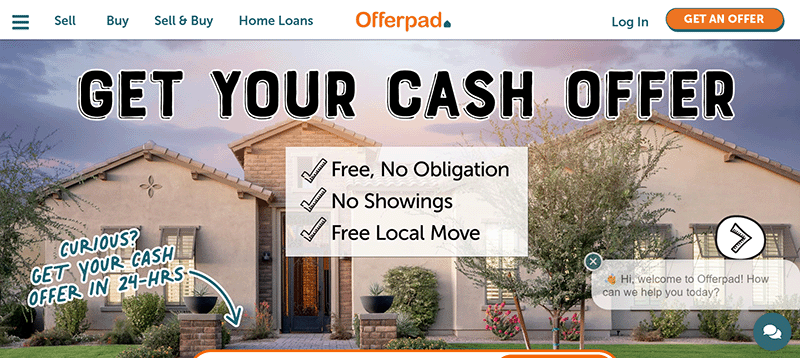
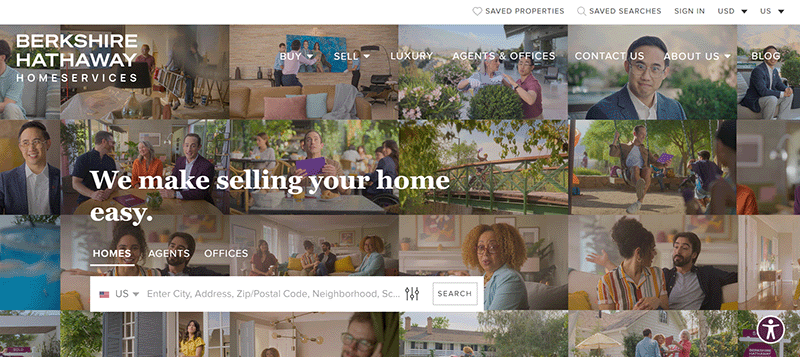
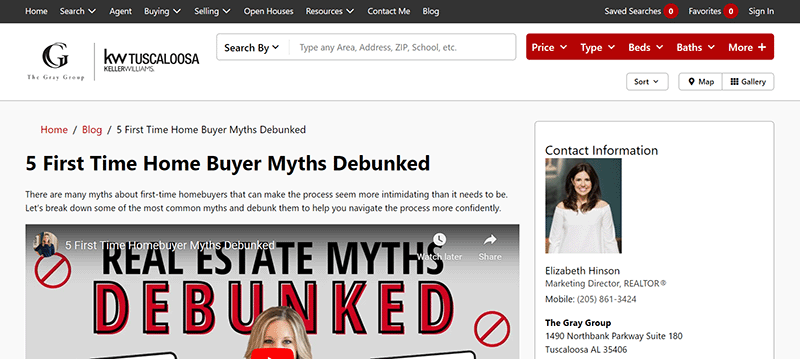
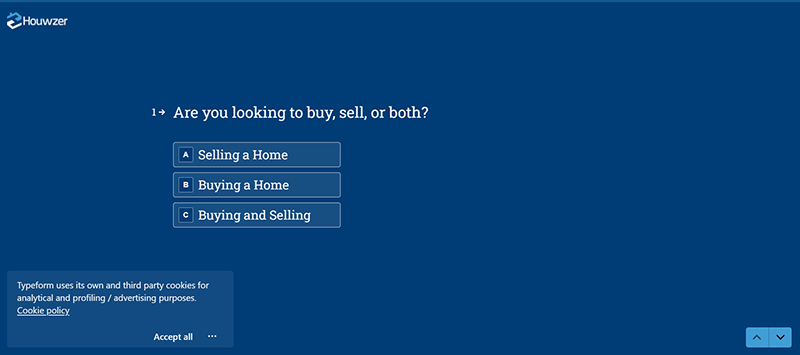
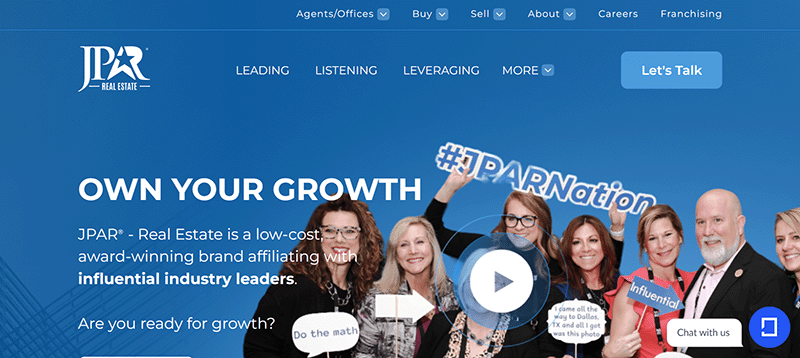

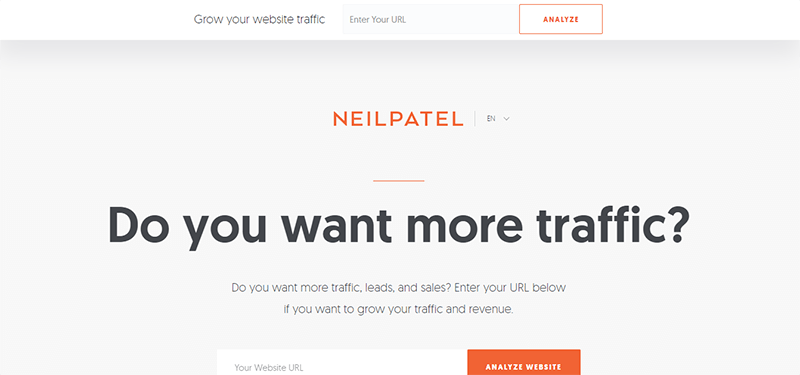



Any article on “real estate landing pages” should include postAprop. 200+ real estate landing pages can be found on this site.
I hadn’t heard of them before. That looks great! I will look more into it and perhaps include a piece on them in the next edit.
After I originally commented I appear to have clicked
the -Notify me when new comments are added- checkbox and from now on every time a comment is added I receive four emails with the exact same
comment. There has to be a way you can remove me from that service?
Many thanks!
That’s not good. I believe WordPress has your information but I do not – I will double check but in the meantime I have disabled the old comment system and replaced it with a new plugin that I hope will not have this problem. Please email me if you are still getting spam!